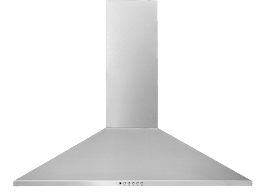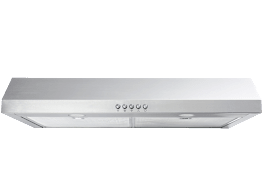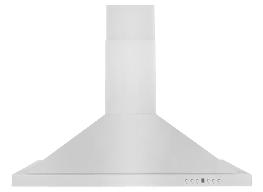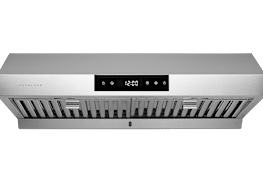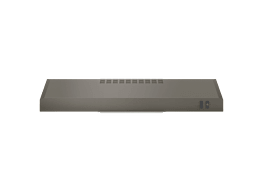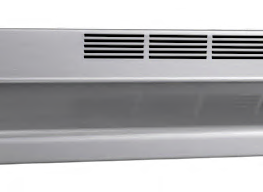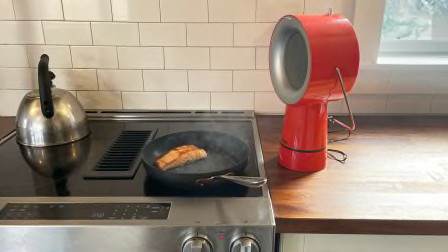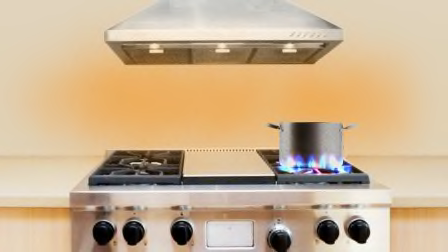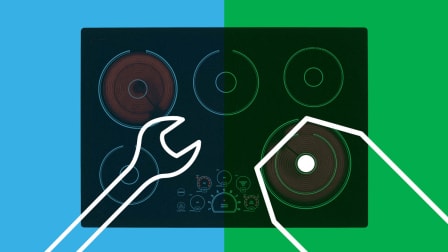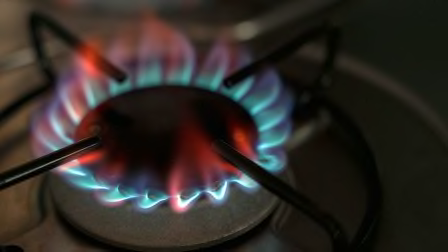Best Range Hoods of 2025
The top models from companies like Frigidaire, Hauslane, and Vissani keep cooking odors and grease to a minimum
When you shop through retailer links on our site, we may earn affiliate commissions. 100% of the fees we collect are used to support our nonprofit mission. Learn more.
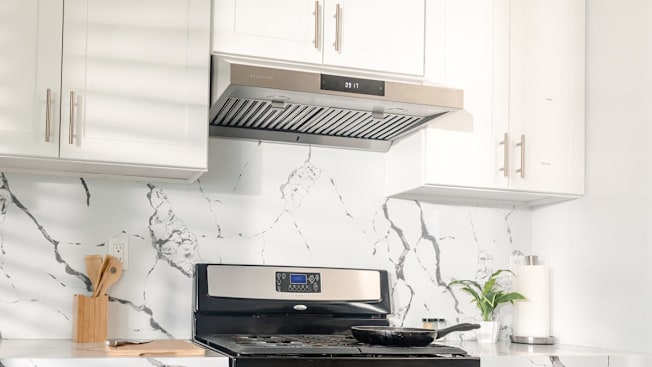
For many homeowners, a range hood is just an afterthought. While they spend hours researching ranges and cooktops for kitchen upgrades, they often skip over the final piece. But a good range hood makes cooking indoors much more pleasant, and planning a range hood installation in advance can make the renovation process much less painful.
A good vented range hood improves air circulation in your kitchen, our tests have found. It also eliminates odors and cuts down on cleaning time, too, because grease droplets that would otherwise settle on cabinets, countertops, and, well, anything else within range are sucked out of the room by the range hood.
Best Range Hoods
Vented range hoods come in two basic styles: under-cabinet and wall-chimney. In our tests, examples of each type have performed extremely well, and the shape doesn’t matter. The options below include a mix of the two styles. Each range hood in this roundup is among the fastest at moving air. Most are rather quiet and do a good job of shedding light on your cooktop, too.
Best Under-Cabinet Range Hoods
As the name suggests, under-cabinet range hoods are installed under a wall-mounted cabinet, which conceals the ductwork that runs from the top of the hood through an exterior wall. These hoods are rectangular, roughly resembling the shape of an old-school Blu-Ray player. The vast majority are 30 inches wide, matching the width of most ranges.
Best Wall-Chimney Range Hoods
Wall-chimney range hoods (also called wall-mount range hoods) include a chimney, usually made of stainless steel. The chimney is used to hide the ductwork, and most people choose to run the chimney to the ceiling for aesthetics, even if the ductwork exits at a lower point. The hoods themselves vary considerably in design—most are metal, but some use elements of glass or wood. They’re typically 30 inches wide to match the width of most stoves.
How CR Tests Range Hoods
“A good range hood isn’t just about airflow,” says Kenneth Sutton, CR’s test engineer in charge of range hood testing. “It should clear the air quickly, provide even lighting over your cooktop, and run quietly enough that you’ll actually use it every day.”
We measure airflow—called volume in our ratings—by testing each range hood with a standardized duct size to determine how much air the model can move on its highest fan setting.
We also evaluate the lighting for each model. For this test, we measure the brightness and the uniformity of the light, because a well-designed hood should provide even, sufficient illumination over the cooking surface, so you can get visual cues about what’s happening with your food as it cooks.
Finally, we measure noise levels with a sound meter placed just below the hood at a height chosen to simulate where a cook’s ears would be while standing at the range.
Tips for Installing a Range Hood
The typical installation for a vented range hood—one that exhausts air to the outside—requires cutting through exterior walls, running ductwork, and in most cases, adding cabinetry or a soffit to conceal the ductwork. It’s possible to replace an existing range hood after it dies, but your choices are limited, given that you must choose a model that uses ducting of the same diameter.
If your range hood is struggling to clear the air, try cleaning or replacing the existing filters, because a dirty filter can restrict airflow. If the hood won’t turn on at all, you can have a repair person replace the internal blower or fan, which is easier and less expensive than replacing the entire hood. Skilled DIYers can even attempt the job themselves. If you do, remember to turn off the power before you start working, and make sure to select replacement parts that are compatible with your current hood.
Are Range Hoods Without Outside Venting Effective?
Some range hoods, which are often called ductless, ventless, or recirculating hoods, don’t vent to the outside. Instead, they draw air through a series of filters designed to capture droplets and particulate matter before recirculating that air back into your kitchen. The only recirculating hood we tested, a 30-inch model from GE, was by far the worst of the bunch, in both overall performance and in the volume metric, which measures how much air a hood can move. This makes sense because the model is only capturing contaminants in filters, not actually expelling the dirty air outdoors. But if you live in a home where you simply can’t vent to the outside, a ductless range hood can provide some benefit, particularly when it comes to cutting grease in your kitchen. Just remember to open windows, too, when you’re cooking.
@consumerreports Smells and smoke are no match for the best range hoods of 2023. See the list through the link in our bio. #rangehood #kitchentok #hometok
♬ original sound - Consumer Reports

















